With beautiful, full-color illustrations and fun, catchy rhymes, Yes I Can Listen!, written by Steve Metzger and illustrated by Susan Szecsi, encourages children to develop attentive listening skills. Read below for an interview with the talented Susan Szecsi, as she dives into her illustration process and reveals her favorite techniques and inspirations. Be sure to check out the activity packet that goes along with the book as well.
Yes, I Can Listen! is available on 8/6!
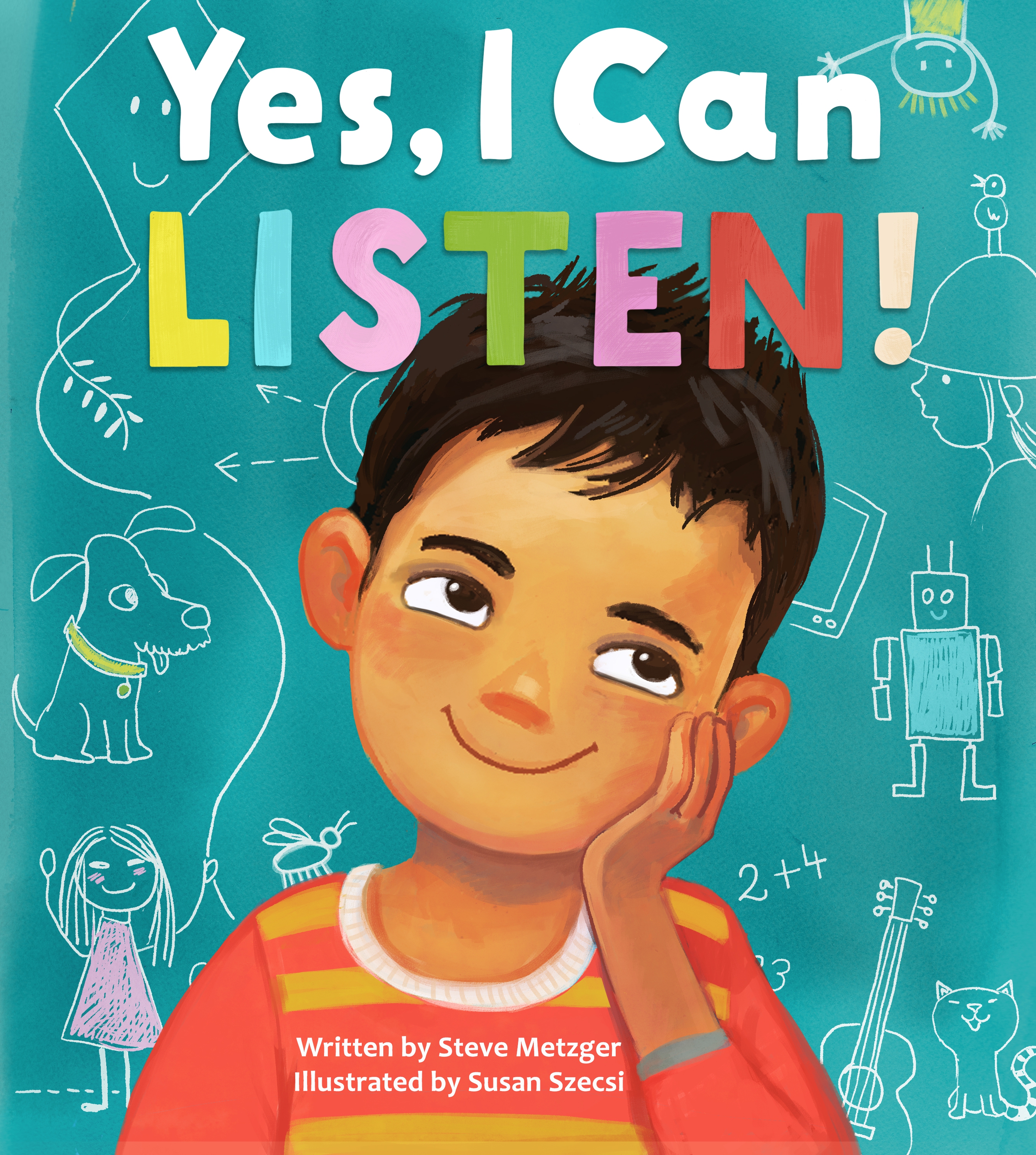
How is illustrating nonfiction books different from story books?
Illustrating nonfiction picture books is challenging and rewarding at the same time. It’s challenging because instead of the usual storyline, the book has a concept, an act or an emotion at its core that the visuals need to help unfold. Sometimes they also lack a main character; instead the book is a series of loosely related scenes connected to the thread of a common theme.
However, the rewarding part is also derived from the same facts. Our common theme in Yes, I Can Listen! is listening to others, parents, teachers, and friends or to nature. Steve Metzger, the author, offers lovely rhyming stories in which our invisible hero is the reader of the book. It gives the illustrator a tremendous freedom.
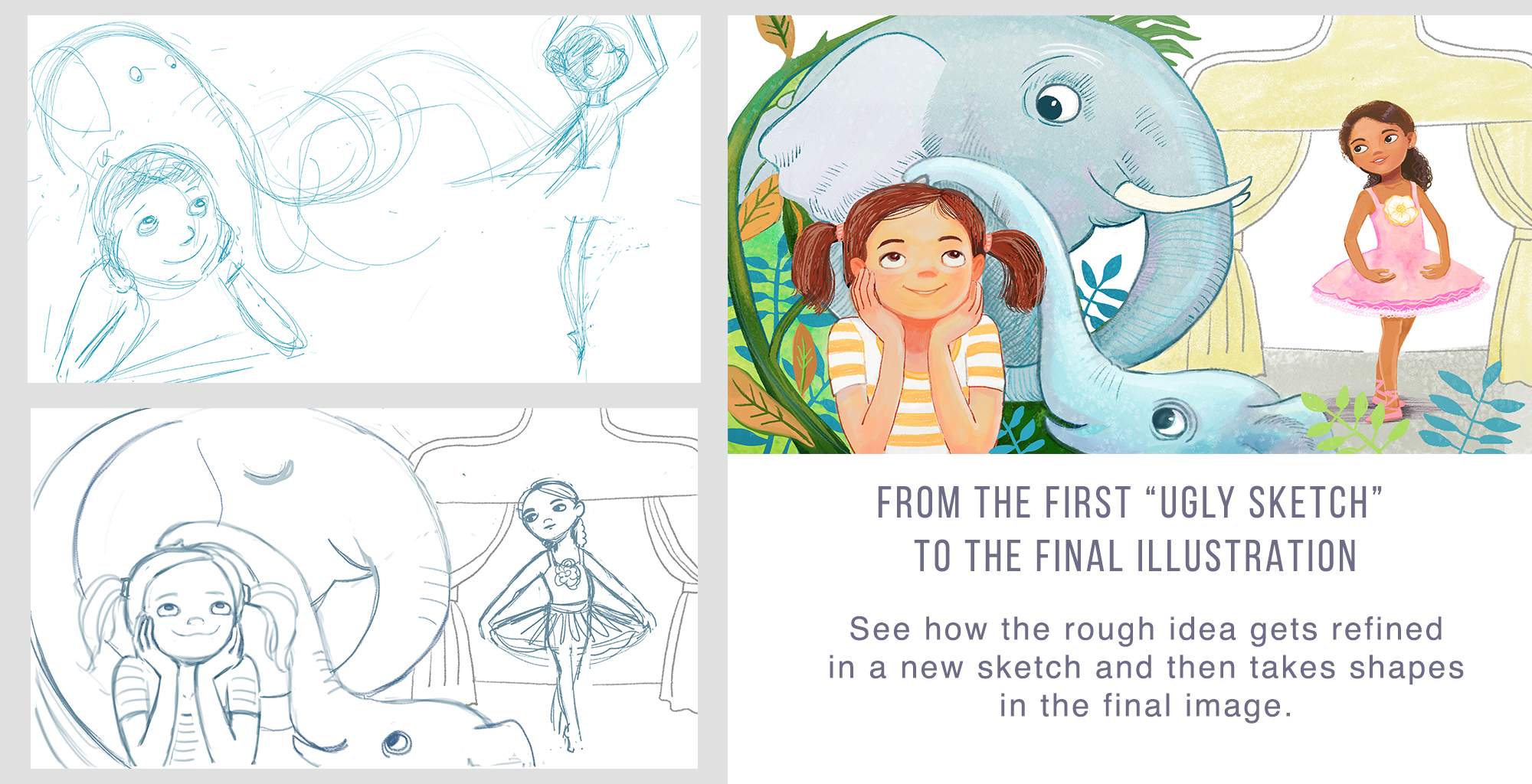
How do you start the process of illustrating a book?
After reading the manuscript a few times, quietly and aloud, I like to savor it for a while. Then I start taking visual notes as there are usually a few lines from the manuscript that have already tickled my imagination.
These scribbles are visual notes of ideas; I call them “ugly sketches.” Their function is to mostly serve as a reminder for the next step when I am setting up a storyboard.
The storyboard contains all 32 pages and gives a great overview of pacing, variety and rhythm of the book as a whole. I like to print it out and draw my thumbnail sketches over it.
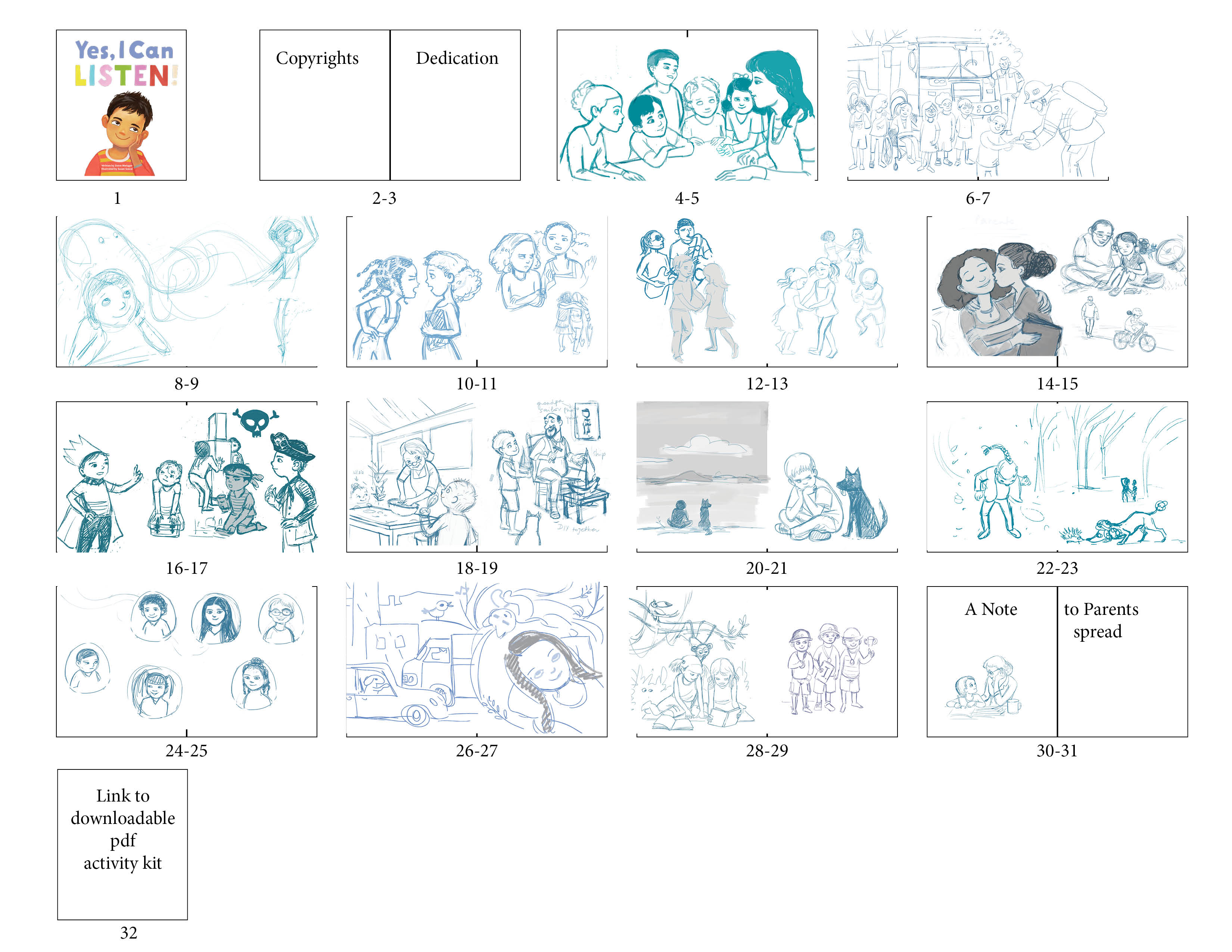
It usually takes a few weeks until everything comes together and I start to really “see” the book. Luckily, I was not alone in this process. There was a lot of back and forth with the publisher. I had a fantastic team—Michelle Williams and her CRP colleagues provided art notes and valuable feedback at every step. The writer was also involved in the process, which is a bit unusual, but I have been very good friends with Steve for years now, and we inspire and appreciate each other.
Our aim was to build a world in YICL where characters and situations are diverse and relatable to 4-to 8-year old readers. We also aimed to continue the legacy of the highly successful predecessors of our book, The Way I Act by Steve Metzger and Janan Cain and The Way I Feel by Janan Cain.
What techniques do you use?
I use a mixed technique. I mostly work digitally, but to make the illustrations more “traditional” looking, I love to collage them with watercolor, pencil or pastel textures. I scan my handmade textures then combine them with the half-ready digital drawings in Photoshop. It gives me great flexibility when changes are required.
Did you have a favorite verse to draw?
It is difficult to choose just one verse as I love every part of the book. I would like to give you three examples: the “new classmates,” the “upset boy” and the “daydreaming girl” illustrations.
I especially enjoyed creating the “new classmates” spreads where several photos of diverse children are displayed on the school board with their favorite toys scattered around them. Taking a second look, you might notice that the pictures of these new kids are sitting on tree branches. It is a reference to family trees; a gentle reminder of that all humans, regardless of race, are connected to one another.
At first, I struggled a bit with the “upset boy” and his dog, trying to squeeze perhaps too much into it. However, I immediately loved the rhyme. It reminded me how deeply sad or desperate children can be sometimes. After a few failed versions, I think the colors and composition now convey the passion and loneliness of the child. And the playful dog gives some relief to an otherwise serious scene.
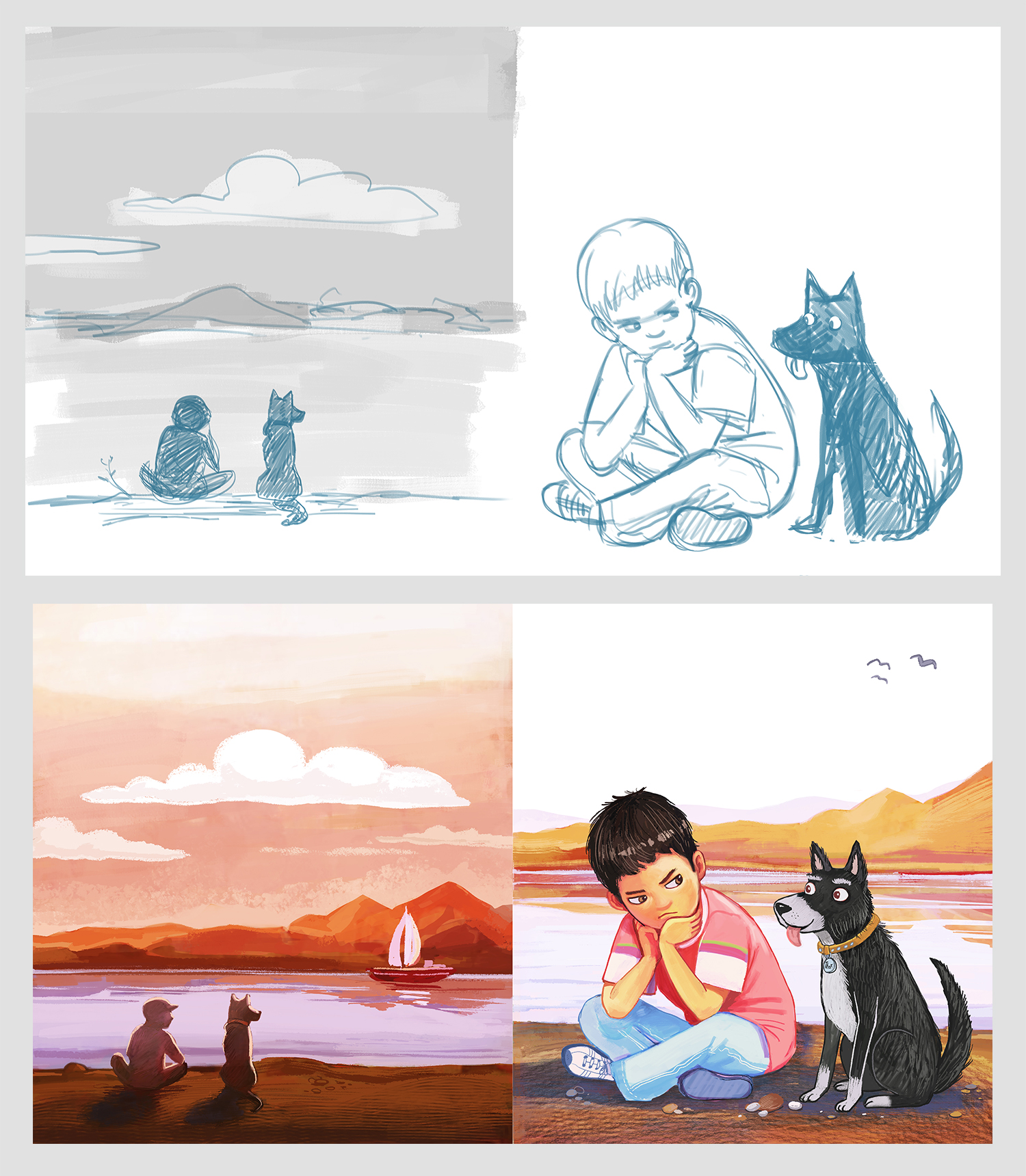
The “daydreaming girl,” however, with the ginger cat curling around her shoulders, listening to the morning sounds, came almost without effort. Dogs barking, birds singing and cars honking in the rain all melt into a magical fantasy world for her. In fact I like that image so much she became my profile picture on Instagram.
Where do you get your inspiration?
It comes from my own childhood or the times when my kids were younger. But it can come from almost anywhere. Books and movies are just as inspiring as observing my surroundings. I am a keen people watcher. The “arguing classmates” spread, for example, stems from my own school years. Who does not remember the fights and sweet reconciliations with their best friend from first grade?
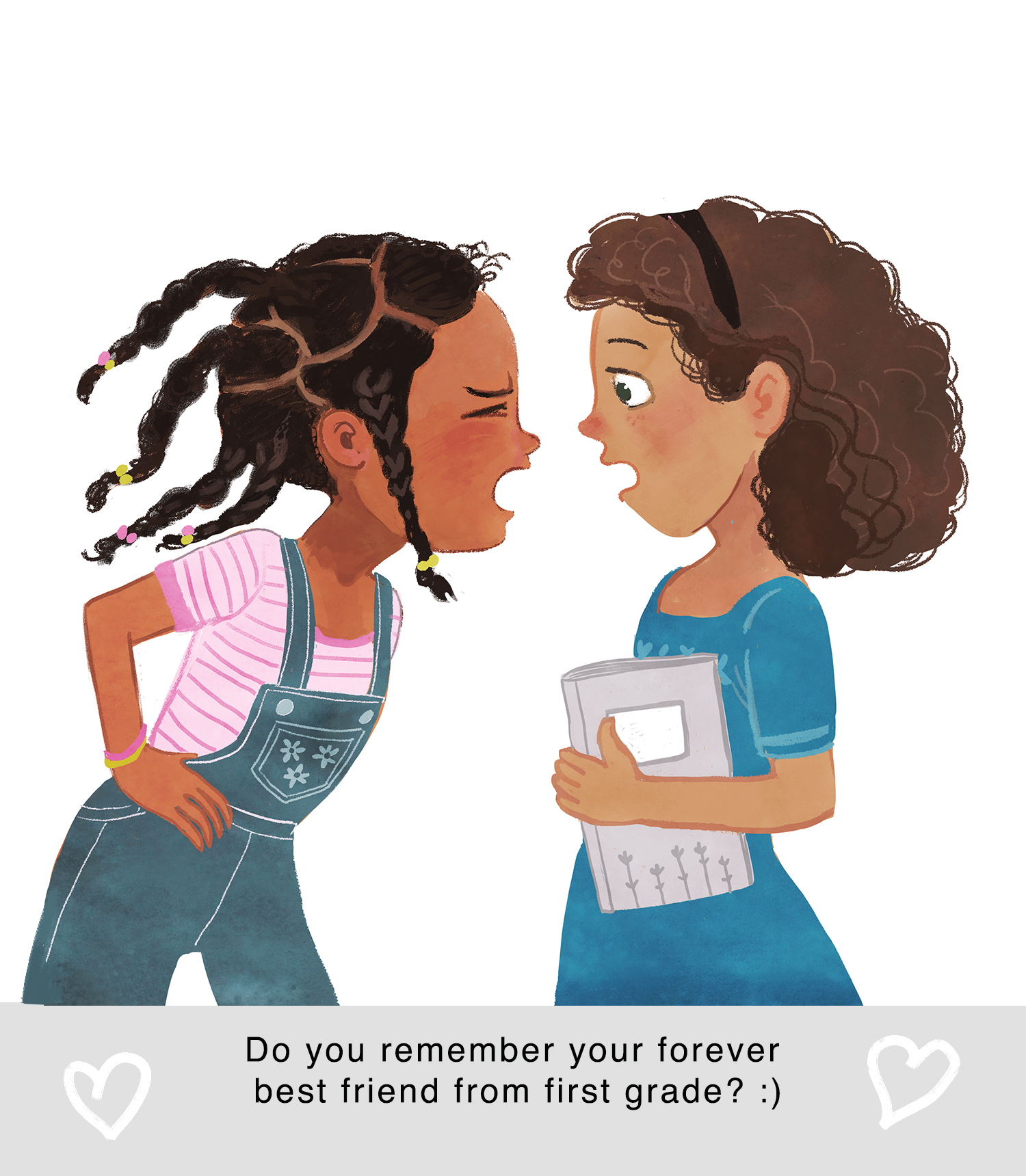
I also collect reference photos. While I never copy them as they are, they come in handy when I need to draw something that I do not often do. For example, the fire truck is based on a photo that I snapped when strolling home from a meeting.
I hope the rhymes and the illustrations will engage readers and that Yes, I Can Listen! will inspire children, parents, teachers and librarians to open more conversations about listening.
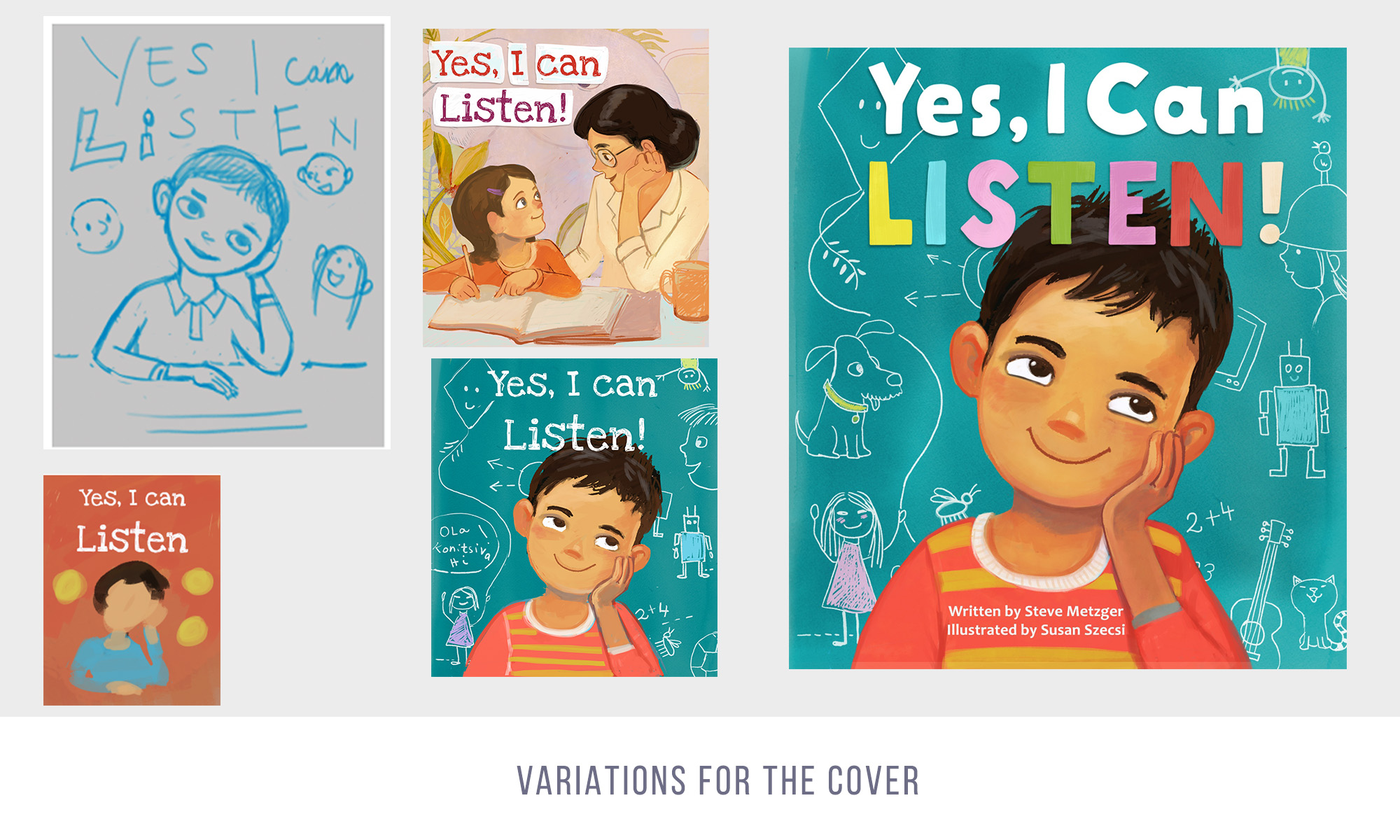
No Comments
No comments yet.